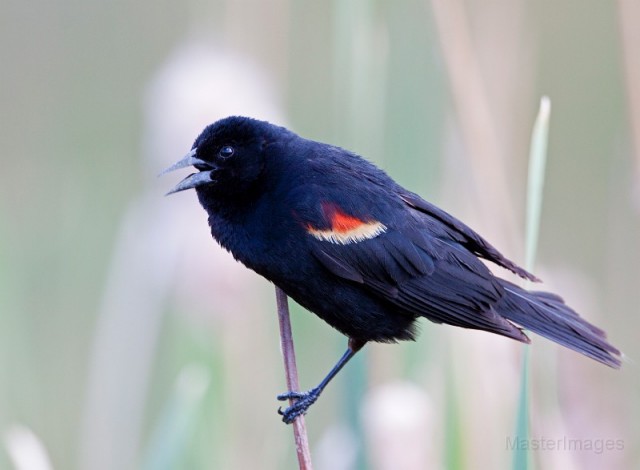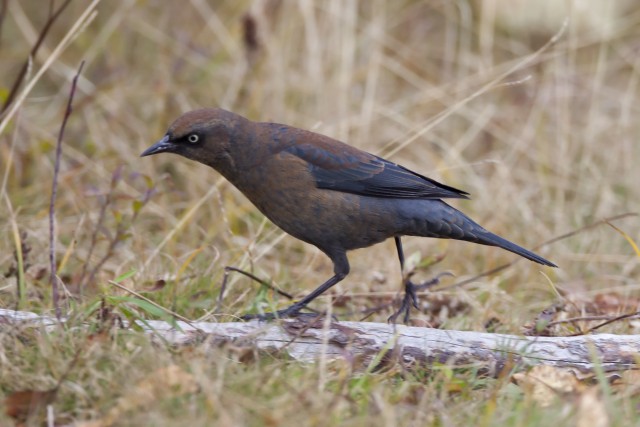While I was out birding a couple weeks ago with friends, we found good numbers of rusty blackbirds. The first birds we noted were in some state land north of Westport in Webb Royce Swamp. Rusty’s spend most of their time in such wetlands – both breeding in the north, and during the winter months in the southeast. The birds we found were migrating on their way south – during which time the birds still often use wetlands. We finished our day at AuSable Marsh where we found between 60 and 70 rusty blackbirds, many of them calling as they sat in the tops of the trees. It was a nice find.
After all, rusty blackbirds are a secretive species which breeds in wetlands and beaver marshes across the boreal forest. Their breeding range extends into the boggy habitats and beaver ponds of the Adirondacks and our region, but we do not see them often during the summer. They are not only secretive, but their breeding habitats are difficult to access. In fact, I’ve helped with a boreal bird monitoring project over the past few years and we rarely find any rusty blackbirds - and rusty blackbirds are one of our target species. And while survey protocols which rely on song are not the best for finding rustys which tend to sing early in the season, there is growing concern about their population numbers throughout their range. 
After all, there have been declines documented in rusty blackbirds in Breeding Bird Surveys as well as surveys such as those for The Second Atlas of Breeding Birds in New York State. Many Christmas Bird Counts in the southeast where the birds winter also show declines in this species.
The reasons for the decline are difficult to ascertain. Theories point to climate change and its many uncertain impacts, loss of habitat, and lethal control of mixed blackbird flocks during the winter, among others. Whatever the reason, the declines in rusty blackbirds are alarming and one that conservationists hope to reverse. If nothing else it points to the need for consistent monitoring of many species – not simply for species of concern – since it is easy to overlook changes in the population of a secretive species. 
For our part, my friends and I were excited with our big flock of migrating rustys. The birds were in their characteristic fall plumage with its rusty coloration of buffy and rufous edged feathers. They are not only fun to see, but also fun to hear and the birds sat in the trees calling and even giving gurgling songs which weren’t quite as tuned up as they would have been in the spring. We watched them as the birds flew up and down from the trees to the bushes and ground below – presumably to feed (we were blocked from view when they dropped to the ground).
We are fortunate in this region to have not only breeding rustys in the bogs and boreal pockets of the region, but also for the opportunity of finding such large migrating flocks which can be hard to come by elsewhere. They are an increasingly uncommon denizen of the northern boreal forest, and one we hope to see in the region for many years to come.


